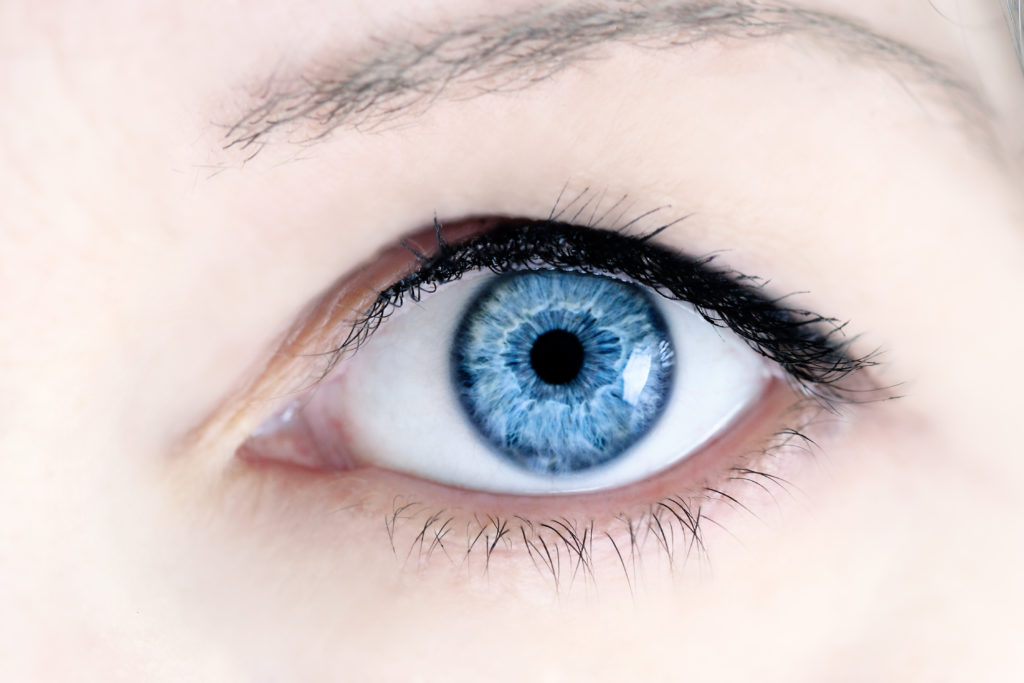A local retina specialist sheds some light on whether tech devices are harmful to the eyes.
By Deborah Lynn Blumberg

Living in the era of technology means we have access to any number of helpful tools, applications and contraptions. But all that convenience also ushers in a whole array of potential health concerns related to our constant connectedness.
From computer screens to smartphones to energy-efficient bulbs, we’re bombarded with blue light. Some say our increased exposure to this type of light can damage our eyes and even lead to vision loss. With all the hype, you might wonder whether your technology habits are doing you harm.
Dr. Sara Chexal, a retina specialist with Retina Consultants of Austin, says you can breathe easy; they’re not. It’s true too much blue light can disrupt your circadian rhythm, or the internal clock that tells you when to sleep and wake. But research doesn’t confirm a link to eye damage, she notes.
“There’s no clear data to suggest normal screen-time exposure will lead to retinal damage,” Chexal says, adding that’s the case even if you’re typing away at your computer all day.
Blue light is just one type of light, and it’s everywhere. Sunlight is the major source. The sun’s red, orange, yellow, green and blue light rays combine to make white light, or sunlight. When we’re outside, we’re exposed to blue light. But in recent years, we’ve been getting more exposure to blue light indoors. Man-made sources include LED and florescent lights and flat-screen TVs. Our computer, tablet and smartphone screens also emit a considerable amount of blue light. Some worry that’s a problem, particularly given how often we engage with screens these days and how close they come to our faces. In one study that drew media attention, researchers found rats exposed to blue light sustained damage to their retinas.
“Much of the research has been done on animals,” Chexal says. “[But] it’s important to remember that our eyes are very different.”
The amount of blue light administered in lab studies is also a far cry from what we would experience in our everyday lives, she says. Still, Chexal notes there is evidence that blue light can interfere with sleep, so it’s a good idea to take precautions to protect yourself at night. Scientists have found blue light particularly suppresses the production of melatonin, a hormone the body releases before bedtime that helps us get to sleep.
“It’s possible too much blue light can affect our circadian rhythm and make it harder to fall asleep,” Chexal says. “Stop screen time early, or filter out the blue light.”
She recommends closing the computer and putting away your smartphone at least one hour before bedtime. If that’s not possible, adjust the settings on your phone or download and use an app that filters out blue light.
Some people buy blue-light-blocking glasses to use at night while working on their laptops or watching TV. The glasses, which cost between $10 and $20 for a basic pair, filter out the active blue light before it reaches your eyes. A few studies have shown people who wear the glasses several hours before bed report a better quality of sleep. If you decide to buy a pair, Chexal recommends reading the fineprint. Some glasses might block 50 percent of blue light, while others say they block almost 100 percent.
But most important, she says, is to have good habits when it comes to sun exposure: Don’t get too much sun and wear quality sunglasses.
“Be smart,” she says. “Remember we’re getting more blue light fromsunlight than from our screens.”



